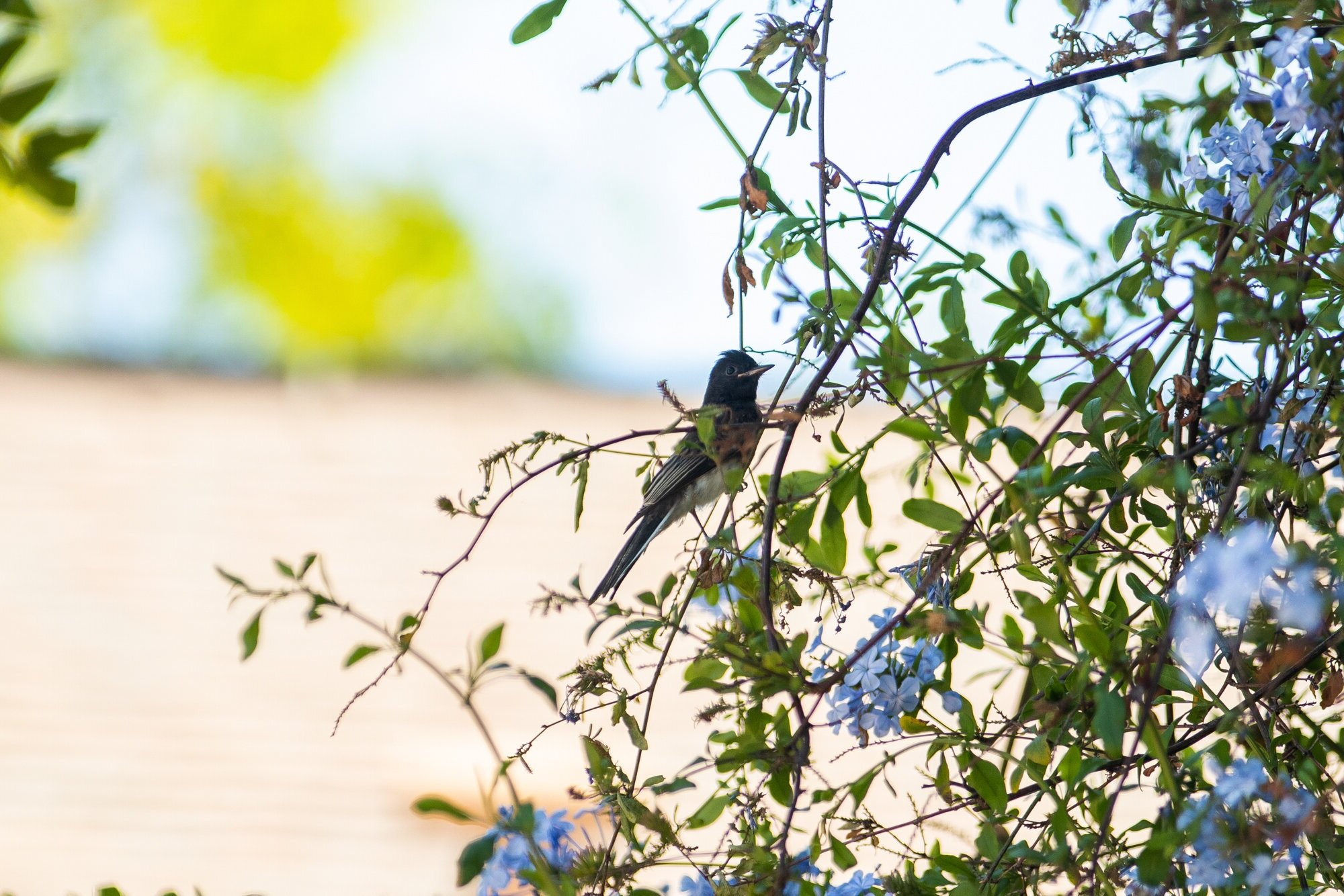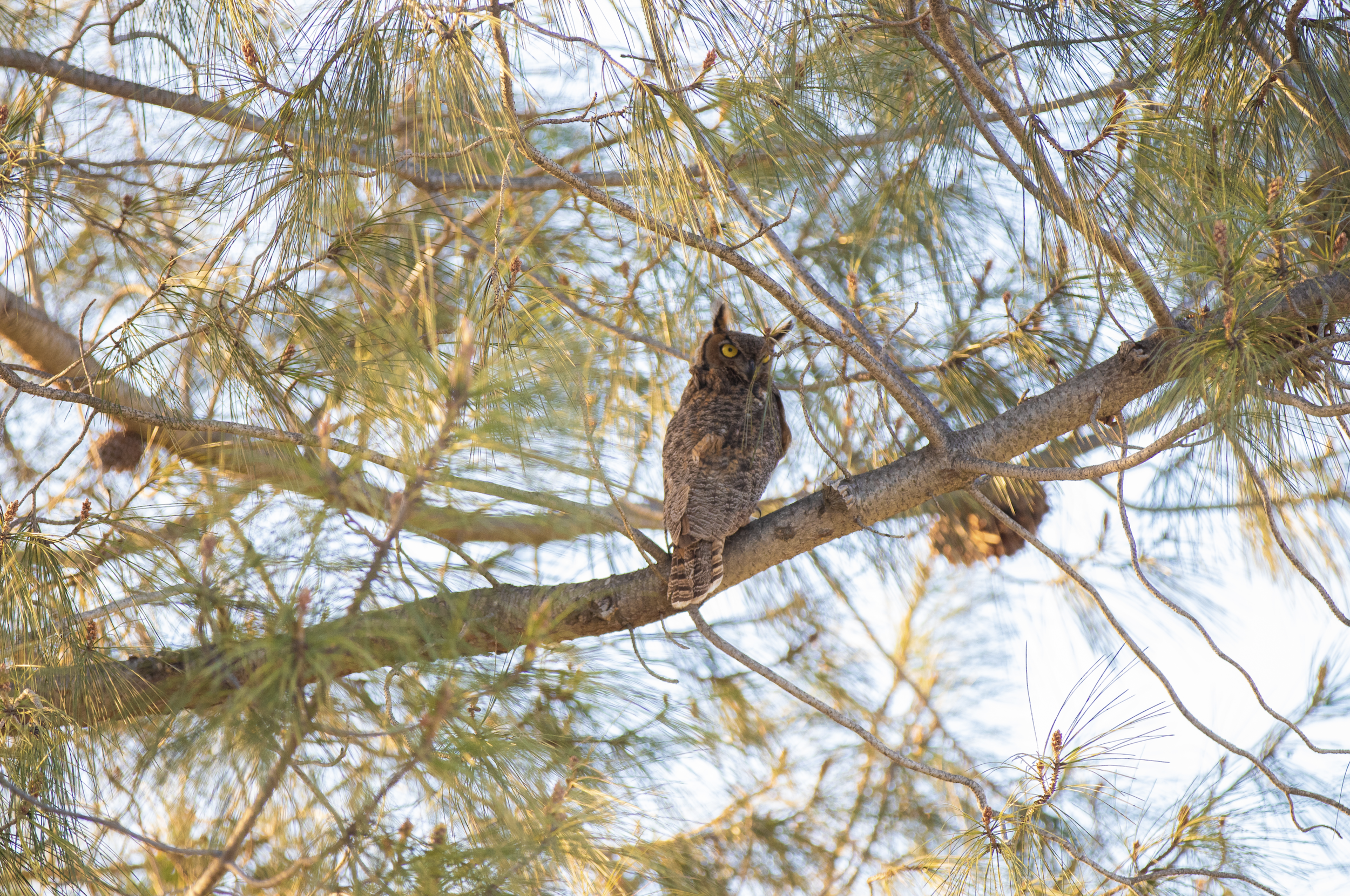
LIVING IN HARMONY WITH BIRDS
GENERAL TIPS:
Clean bird feeders and baths every 2–3 weeks (or after it rains) to prevent the spread of disease.
Do not feed bread to ducks. It’s not a part of their natural diet and can actually make them sick.
Place stickers or decals on your windows to prevent window strikes.
Plant a pollinator garden with native plants. Visit Santa Barbara Botanic Garden for helpful gardening tips.
Don’t use glue traps; birds and other animals are often unintended victims.
Properly dispose of all fishing line, hooks, and nets to protect seabirds.
Keep dogs on a leash; SBWCN receives hundreds of animals each year (like cormorants) that are caught by dogs.
Attract hummingbirds naturally by planting nectar-bearing native plants in your yard or community. If you want to use a hummingbird feeder, please take care in making the appropriate mixture for a hummingbird. you can find a recipe from the Audubon here.
DO NOT USE RODENTICIDE (RAT POISON)
NEVER use poison. Poison impacts the whole food chain and is dangerous to all animals, including owls, foxes, and even your own pets. Just one poisoned rat can kill a whole family of owlets. For more information, visit Raptors are the Solution.
For more information on removing rodents, click here.

BIRD FAQ
-
Visit the baby bird page for more information.
-
It is not uncommon for people to find ducklings in their pool. Sometimes ducklings will follow their mom into a pool and then find themselves unable to get out as they can not fly yet! If you find ducklings stuck in your pool, follow these steps to let them out:
Create a ramp on your pool stairs
Get a towel or a blanket and put half in the pool and half on land.
Weigh down both with a heavy object, like a rock, so that the towel stays in place.
The ducklings will use this ramp to get out of the pool and onto dry land! If your pool has a gate around it, open the gate to let the ducklings out. Keep any pets indoors while the mother leads the ducklings out.
-
The first thing to look for when you see a cormorant on the beach is if it has any obvious injuries. These may include blood, a bone sticking out, or a wing that is clearly broken (not symmetrical with the other wing or sticking out at an angle). In other scenarios, you may not see an obvious injury but did see the cormorant being attacked by a predator, such as a dog. In these cases, please call the SBWCN Helpline for assistance (805) 681-1080.
If you see a cormorant at Haskell’s Beach that does not have any obvious signs of injury, leave it alone! Haskell’s Beach is the main cormorant rookery in the area. Juvenile cormorants spend their days on the shore before returning to the water at night. Some facts about Brandt’s cormorant’s nesting season:
Brandt's cormorants nest in colonies on the ground including cliffs, islands, and offshore rocks.
During the breeding season, the adults have an expandable pouch on their throat that turns blue.
Juveniles are brownish overall with a lighter chest.
-
• Cayenne Pepper: Sprinkle around holes or frequented spaces.
• Homemade pepper spray:
- Boil several hot peppers, an onion, and one tablespoon of cayenne pepper in 2 quarts of water for 20 minutes. Strain the liquid and spray it around trash cans, plants, flower beds, tree trunks, and the outside of buildings. Not only is there an unpleasant odor to this mixture, but it is uncomfortable on raccoons’ paws and they will learn to stay away. The effects of this spray are temporary, so you’ll need to reapply it every 2 or 3 days—or after any rain. (source)
• Install or purchase an [owl box] (see below)
-
SBWCN has partnered with a local woodworker for custom-made owl boxes, with a portion of proceeds benefiting SBWCN. These boxes are made-to-order at $180 and take 2-4 weeks for production. Delivery and installation are available for an additional cost within Santa Barbara County. For more details, contact Jonas at (805) 621-4592.
-
While there is no guarantee that an owl will take residence in your owl box, there are ways you can attract an owl to your owl box during nesting season.
1. Choose the right size nesting box for the owl you are trying to attract. For example, screech owls have been known to use nesting boxes with an entrance hole of at least 3 inches in diameter, while barn owls prefer a 6-inch entrance hole.
2. Choose the right location for your owl box. Owls will only visit areas they feel safe, so the positioning and placement of your box need to be in an area that will be favorable for them. Owl boxes should be placed at least 12 feet off the ground in a sheltered and stable spot away from wind and predators. Boxes should also be placed clear of branches or buildings to ensure clear access from the flight path into the home.
3. Set up your owl box early! Owls primarily use owl boxes during nesting season. Owls nest much earlier than other species, so boxes should be put up by January or February to give the owls plenty of time to find their new home.
4. Install a large bird bath. Even though owls get most of their water intake from their diet, they still require water access for drinking and bathing – especially in the warmer months. You can install a large, deep basined bird bath (2 inch minimum) in a secluded area that will be safe from interference.
5. Offer a perch. In addition to the owl box, owls require a safe space to rest and save energy while watching for prey. Owls use perches as a resting spot while they are hunting, preening, or simply on the lookout for predators. If you do not have any natural perches such as large tree branches, create your own with a tall fence post, pole, or crossboard.
6. Reduce light pollution. Owls are nocturnal hunters and can hunt more effectively in darkness. Because of this, they will avoid a well-lit yard in order to best catch their prey. Avoid extensive exterior lightings and turn off all exterior lights once you’ve gone to bed so the owls can get to work. By keeping your outdoor lights off at night, you increase the odds of an owl visiting your yard and helping control prey populations.
7. Encourage natural grass and old tree growth in your yard. Many of an owls’ natural prey choices are drawn to long, thick grass. Mowing your lawn less often creates just the right environment to draw out prey and provide a more appealing hunting ground for owls. Trees are also a necessity for attracting owls. Shaded and secluded areas with dense tree cover helps keep the owl from being disturbed and provides attractive space for nesting.
8. Keep your pets indoors. Owls will prey upon anything they think they can handle or anything that poses a threat, especially during nesting season. Supervise small pets during the day and keep them indoors when possible to offer a safe space for owls.
9. Do NOT use rodenticide. NEVER use poison. Poison impacts the whole food chain and is dangerous to all animals, including owls, foxes, and even your own pets. Just one poisoned rat can kill a whole family of owlets. Owls are better able to naturally control rodent populations with the average barn owl family eating over 3,000 rodents per year!
-
Live-trapping and relocation is inhumane. If animals are introduced into areas they are unfamiliar with, they do not know where food, water, or shelter sources are. There may be other animals in the area that have diseases to which the introduced animal has never been exposed. The introduced animal may be encroaching on another's territory.
Trapping is only a temporary solution. The reasons animals are visiting your property must be addressed before they stop visiting. If you get rid of one, another will simply take its place.
Traps often do not catch the intended targets. Other animals, including pets, are just as likely to enter traps. Animals caught in traps often injure themselves trying to escape.
